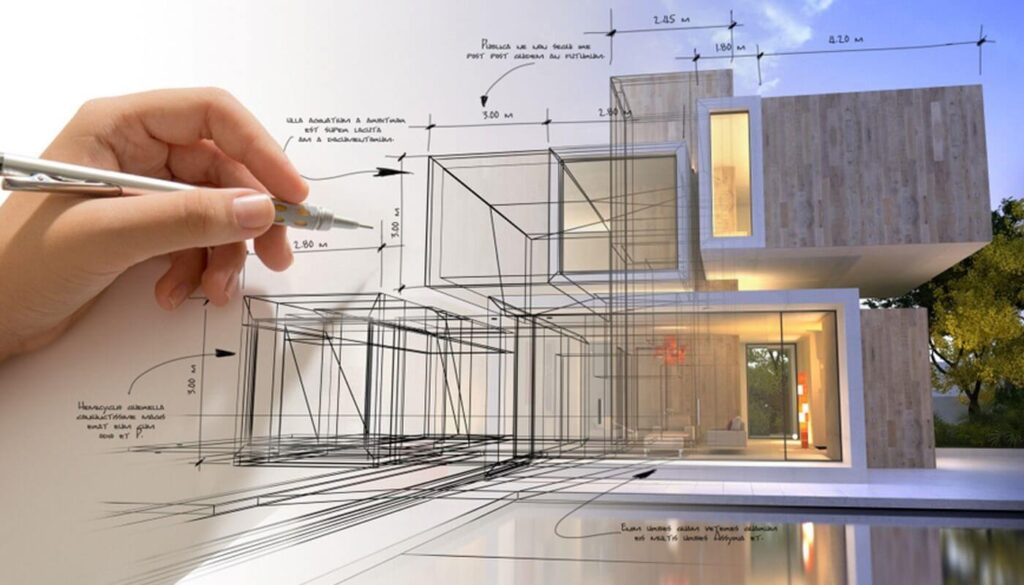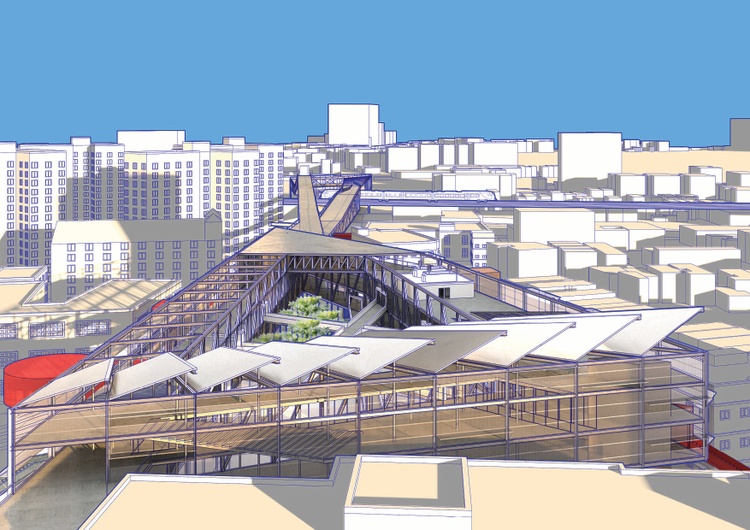Boost Your Structure Layout with the Proficiency of CDA Architects
Boost Your Structure Layout with the Proficiency of CDA Architects
Blog Article
The Impact of Technological Advancements on the Layout Practices of Contemporary Architects
The rapid development of technological devices has actually considerably reshaped the layout landscape for contemporary architects, cultivating unprecedented degrees of advancement and sustainability. The combination of Structure Info Modeling (BIM), parametric design, and expert system has not only streamlined partnership among varied teams yet also redefined task execution. Nonetheless, as engineers embrace these innovations, they are faced with complex difficulties that could affect their creative processes. Discovering these dynamics discloses a nuanced interplay between modern technology and conventional layout approaches, motivating a closer evaluation of what the future holds for building practices.
Development of Architectural Equipment
Just how have building devices transformed the style and construction processes over the centuries? The advancement of building tools has considerably impacted the efficiency, precision, and creative thinking of style and building.
With the advent of the Renaissance, the intro of the compass and the protractor noted a pivotal change. These tools enabled engineers to attain higher accuracy in their layouts, assisting in the appearance of even more elaborate and proportionate structures. The Industrial Transformation further changed building practice with the intro of mechanized tools and products, allowing for bigger and much more enthusiastic jobs.
In the 20th century, the development of computer-aided layout (CAD) software changed the landscape once again, giving architects with extraordinary abilities in modeling and visualization. Today, progressed tools such as Structure Info Modeling (BIM) and parametric layout software remain to press the limits of architectural development, making it possible for a more incorporated strategy to layout and building and construction procedures.
Improved Cooperation in Design
As modern technology remains to advance, enhanced cooperation in design has come to be a cornerstone of contemporary building practice. The combination of electronic tools such as Building Details Modeling (BIM), cloud-based systems, and advanced visualization software application has changed the means architects, engineers, and stakeholders communicate throughout the layout procedure. These tools promote real-time interaction, permitting groups to share concepts, modifications, and responses immediately, no matter geographical area.

In addition, interdisciplinary partnership has been streamlined with these technological developments, enabling architects to function a lot more carefully with other specialists, such as metropolitan planners and ecological experts. The result is an extra natural method to design that takes into consideration different perspectives and knowledge. Inevitably, improved collaboration in layout is not simply a trend; it is crucial for producing innovative, useful, and visually pleasing architecture in a significantly complicated world.
Sustainability Through Innovation
Sustainability in style has progressively come to be intertwined with technological innovation, driving the market towards ecologically liable practices - cda architects. Contemporary designers are leveraging innovative technologies to reduce ecological effect while boosting the efficiency of structures. One prominent example is making use of Structure Details Modeling (BIM), which enables precise planning and source appropriation, lowering waste throughout building and promoting energy effectiveness throughout a structure's lifecycle
Moreover, smart materials and energy-efficient systems are being incorporated right into styles to enhance source use. Technologies such as photovoltaic or pv cells and environment-friendly roof covering systems harness renewable resource resources, adding to reduced carbon footprints. Additionally, the application of artificial intelligence in layout procedures makes it possible for engineers to mimic and assess power usage, assisting decisions toward more lasting end results.
The assimilation get redirected here of sustainable innovations not only aligns with global ecological objectives however also satisfies an enhancing demand from consumers for environment-friendly options. As designers embrace these developments, the emphasis changes towards producing areas that are not only aesthetically pleasing yet likewise functionally sustainable, thereby redefining the criteria of modern style. In this method, innovation acts as a driver for sustainability, enabling engineers to create buildings that regard and improve the all-natural environment.
Obstacles in Application
While technological innovations in design hold fantastic pledge for improving sustainability, their implementation commonly experiences substantial difficulties - cda architects. One primary barrier is the steep knowing curve connected with new modern technologies. Designers and building specialists might call for substantial training to successfully use sophisticated software program and devices, which can delay task timelines and enhance prices
In addition, the assimilation of arising technologies, such as Structure Info Modeling (BIM) and sustainable materials, typically requires partnership throughout multidisciplinary groups. This cooperation can be impeded by distinctions in competence, operations, and communication styles, bring about potential conflicts and ineffectiveness.
Financial restraints additionally make complex the adoption of innovative innovations. Lots of building companies, particularly smaller ones, may lack the resources to invest in innovative tools, restricting their capacity to take on bigger firms that can afford such investments.
Furthermore, governing structures and building ordinance may not equal technological developments, producing uncertainty and prospective compliance problems. This difficulty can prevent designers from completely accepting new technologies, as the risk of non-compliance may outweigh the advantages. Resolving these execution obstacles is vital for the successful integration of technical improvements in contemporary architectural methods.
Future Trends in Style
The difficulties connected with the implementation of brand-new technologies in style have motivated a reevaluation of future patterns within the industry. As engineers browse concerns such as sustainability, urbanization, and social equity, they are progressively adopting cutting-edge innovations to improve style efficiency and ecological performance.
One noticeable pattern is the integration of expert system (AI) in the layout process. AI devices can evaluate vast datasets to notify design decisions, boosting both creative thinking and capability. In A Similar Way, Structure Info Modeling our website (BIM) remains to advance, allowing real-time partnership amongst stakeholders and helping with structured job management.
Sustainable style techniques are also getting energy, with engineers concentrating on adaptive reuse and regenerative layout concepts that reduce source hop over to here intake and waste. The incorporation of wise materials and eco-friendly power sources will additionally boost the resilience of buildings when faced with environment adjustment.

Final Thought
Technical developments have actually significantly reshaped building style practices, promoting improved accuracy, collaboration, and sustainability. The combination of tools such as Building Details Modeling and parametric layout software, alongside fabricated intelligence and clever products, equips designers to attend to complex difficulties much more properly.
Report this page